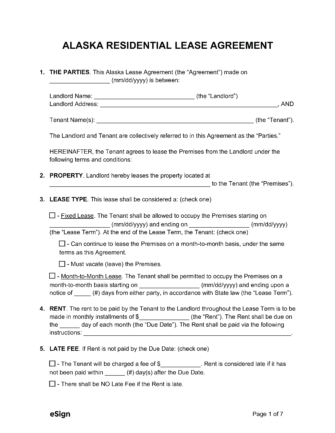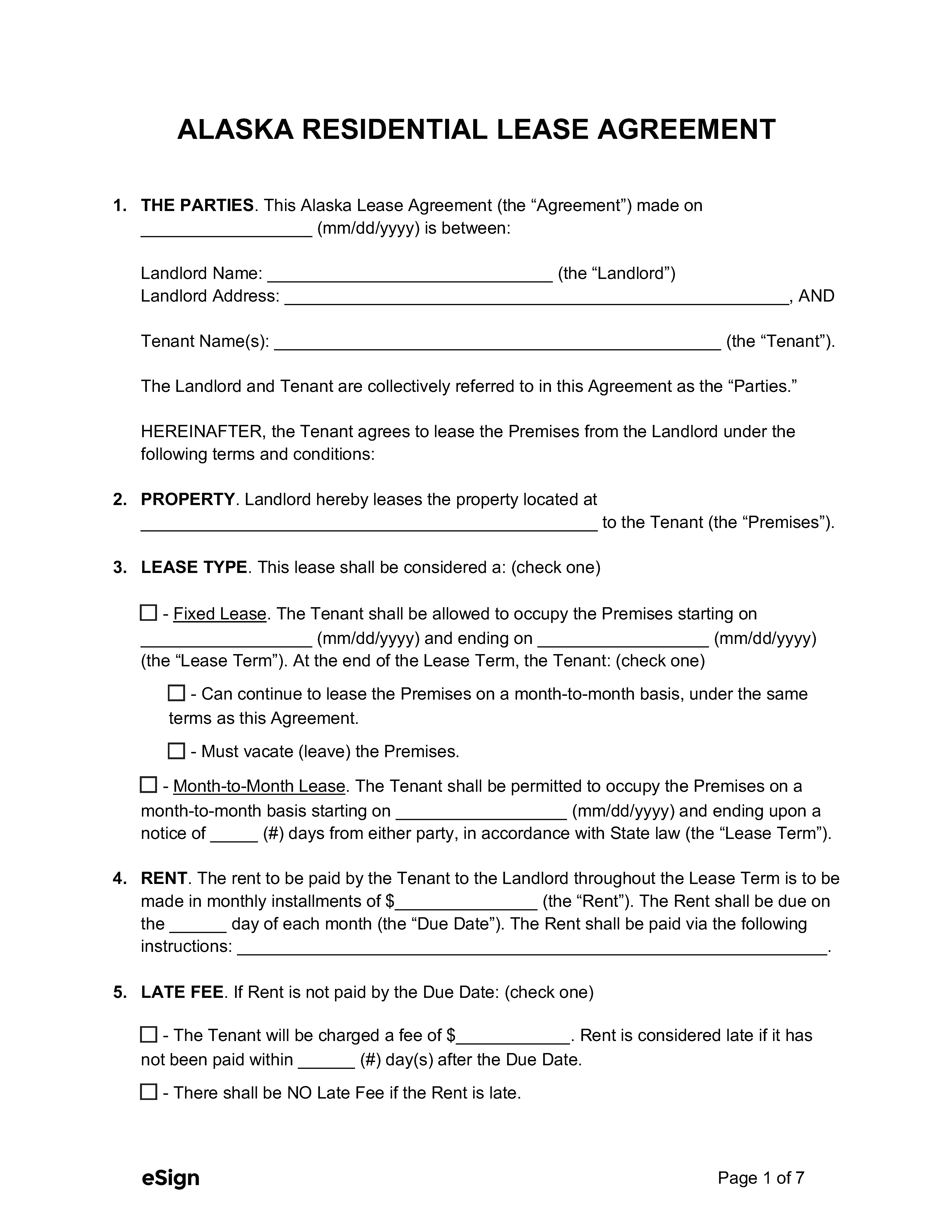
An Alaska lease agreement is a contract between a landlord and a tenant that defines their relationship and the conditions of a commercial or residential tenancy. The terms outlined in a rental agreement typically cover the lease length, cost of rent, responsibilities for maintenance and repairs, and penalties for failing to comply with any of the lease requirements.
An Alaska lease agreement is a contract between a landlord and a tenant that defines their relationship and the conditions of a commercial or residential tenancy. The terms outlined in a rental agreement typically cover the lease length, cost of rent, responsibilities for maintenance and repairs, and penalties for failing to comply with any of the lease requirements.
PDF Download
An Alaska lease agreement is a contract between a landlord and a tenant that defines their relationship and the conditions of a commercial or residential tenancy. The terms outlined in a rental agreement typically cover the lease length, cost of rent, responsibilities for maintenance and repairs, and penalties for failing to comply with any of the lease requirements.
4.2 | 5 Ratings Downloads: 592
Rental Application – This document can be used to screen potential tenants and obtain their background information.
Maximum Amount ($) – The maximum a landlord can demand is two months’ rent. However, if the monthly rent is more than $2,000, there is no limit on the security deposit amount. [5]
Collecting Interest – If a security deposit earns interest, the interest must be paid to the trustor (tenant). [6]
Returning to Tenant – Must be returned within 14 days if no deductions are made to the security deposit. If deductions are made, the landlord has 30 days to return the deposit. [7]
Itemized list Required? – Yes, if deductions are made to the tenant’s security deposit, an itemized list must be delivered within 30 days of lease termination. [8]
Separate Bank Account? – Yes, the landlord is required to deposit the funds in a separate trust account. [9]
General Access – Landlords must provide 24 hours’ notice and can only enter with the tenant’s consent. [10] A tenant cannot unreasonably deny entry if it’s necessary for any of the following reasons: [11]
Immediate Access – In an emergency, the landlord may enter the premises without the tenant’s consent. [12]
Grace Period – There is no grace period. Rent is paid at the time and place agreed upon by the parties. [13]
Maximum Late Fee ($) – Alaska law does not specify a maximum. Generally, landlords can charge a small flat fee or a percentage-based fee that’s 5% above the Federal Reserve discount rate; however, if no discount rate is set, the maximum interest-based fee is 10.5% . [14]
Bad Check (NSF) Fee – $30 is the maximum fee that can be charged for a bad check. [15]
Withholding Rent – If the landlord breaches the lease by not providing essential services like hot water and heat, the tenant can inform the landlord of the violation, restore the services, and subtract the costs from their rent. [16]
Non-Payment of Rent – A 7-day notice can be delivered to the tenant the day after their rent is late. [17]
Non-Compliance – A 10-day notice may be delivered to the tenant for any lease violation that can be cured. [18]
Lockouts – The landlord cannot change the tenant’s locks on the property without a court order. If a tenant is unlawfully excluded from the property, they can sue the landlord and recover up to one and a half times their damages. [19]
Leaving Before the End Date – If a tenant leaves before the end date, they will be liable for rent until the end of the lease term or the landlord re-rents the space , whichever is earliest. [20]
Month-to-Month Tenancy – A 30-day notice is required for either party to terminate a month-to-month lease arrangement. [21]
Unclaimed Property – If the tenant leaves behind personal items after the lease has ended, the landlord must give notice and allow 15 days for retrieval. If unclaimed, the landlord can sell the valuable items and throw out everything else. [22]